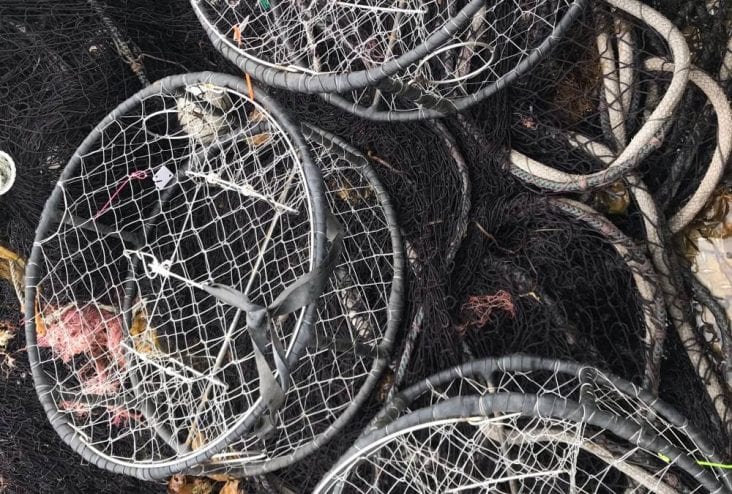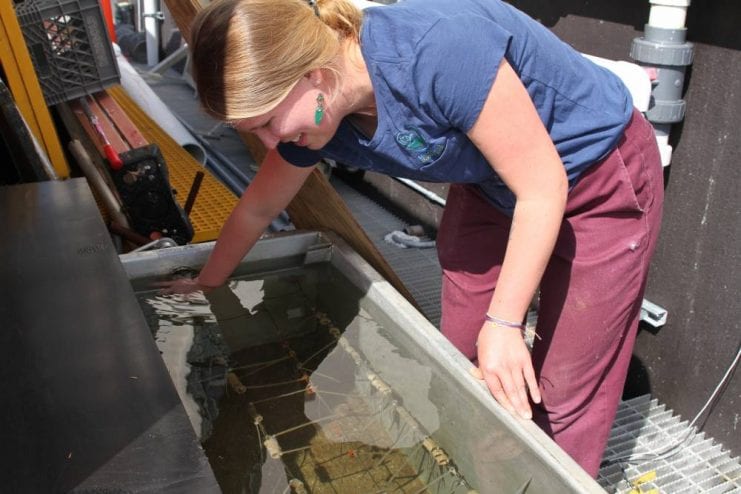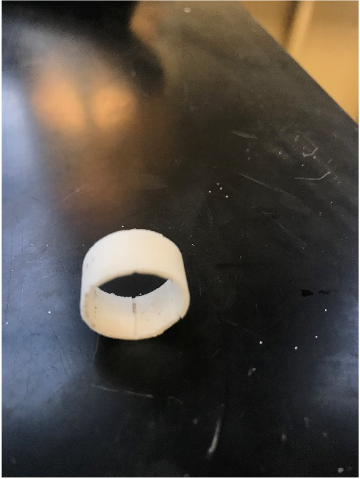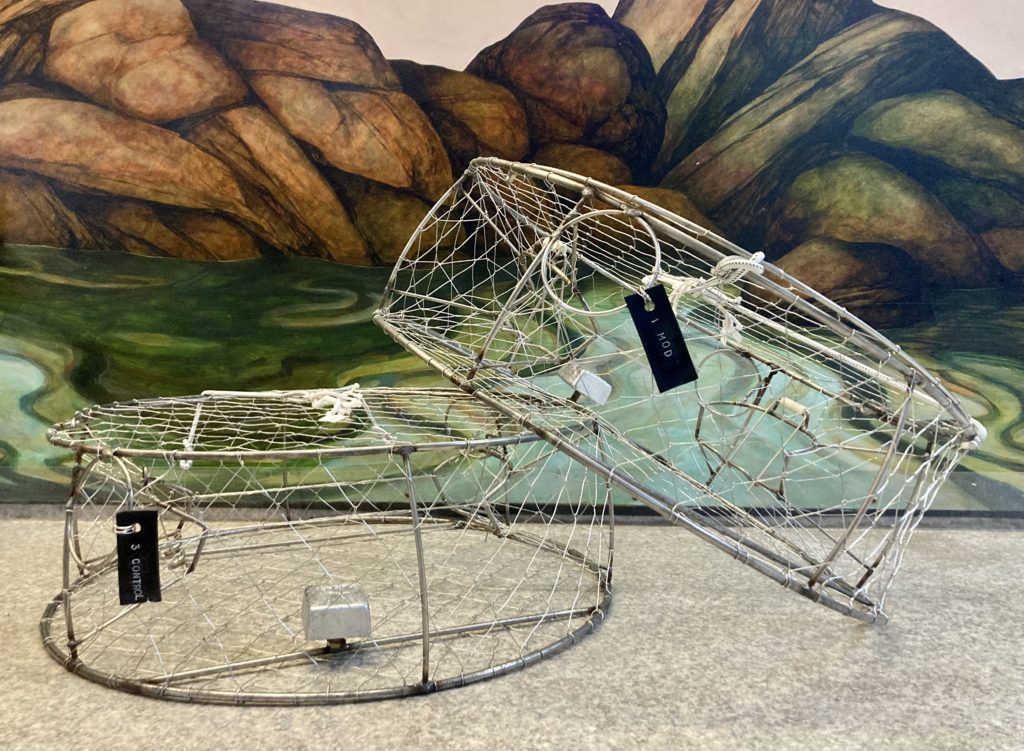
Derelict gear presents a significant ecological and economic quandary to Alaska. A study, led by Virginia Institute of Marine Sciences (VIMS) with assistance from Sitka Sound Science Center is testing out a new biodegradable hinge to prevent what is known as ghost fishing.
Crab pots are required to have a biodegradable cord that will ultimately rot and let crabs escape, but biofouling and improper rigging means some pots continue to fish. Scientists at VIMS developed a crab pot hinge made of a biodegradable polymer that was used to replace the hinges controlling the door that traps the crabs. The idea being, if the hinges degrade then the door will fall off and crabs can escape, replacing the need for the cord altogether. For two years, SSSC outfitted several pots and gave them to sport fishermen to try out, in addition we set up a laboratory study to see how long it takes the hinges to degrade in Alaskan waters.




Preliminary Findings:
From Year 1, preliminary reports from the fishermen indicate that pots with the modified hinges caught about half as many crabs as unmodified pots because the crabs yanked the doors off the hinges. These hinges were found to be useful in the Chesapeake Bay blue crab fishery and are currently in use there. The research was continued in 2021 with redesigned polymer hinges.
Project Contact: Ron Heintz
Funded by the National Fish and Wildlife Foundation
